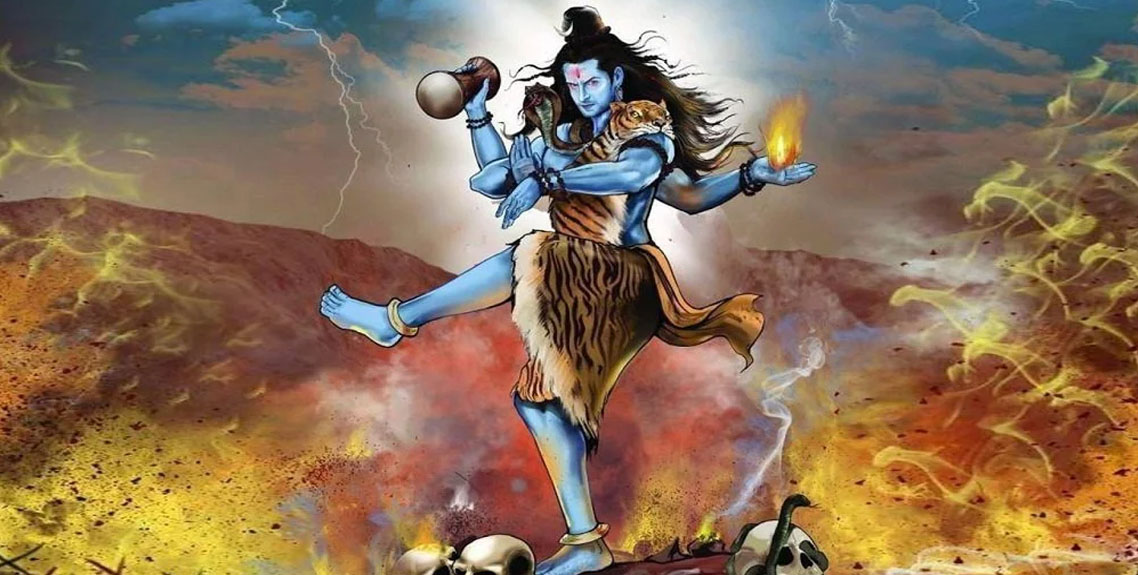Forms of Lord Shiva and depictions
Forms of Lord Shiva and depictions
Lord Shiva has the ambivalent nature worshiped by Hindus as their supreme God. He was destroyer versus benefactor. God Shiva is depicted in the Mahabharata as a figure of honor, delight, and brilliance. The Rudra form of Lord Shiva denotes the wild one” or the fierce god. Shiva is also known as the Sambhu causing happiness.
Shiva as an Ascetic versus householder
The God Shiva’s family includes Shiva, Parvati, Ganesha and Kartikeya or Skanda. Lord Shiva is depicted as both an ascetic yogi as well as a householder. As a yogi he is depicted sitting and meditating on tiger skin. As a householder he is also known as Umapati or the husband of Uma or Umakanta or Umadhava. Mata Parvati is identified as a Devi or Divine Mother or Shakti (divine energy), Tripura Sundari, Durga, Kamakshi, Meenakshi and many more. It is considered that she is the source of Lord Shiva’s creative energy. His son Ganesha is worshipped as the Remover of Obstacles. His son Kartikeya is worshipped by different names such as Subrahmanya, Shanmughan, Swaminathan, Murugan, Subrahmanyan, Skanda, Kumara
Lord Shiva is known as the Nataraja as he is the Lord of Dance as an eternal dancer. His dance with music is described in the Puranic period. Tandava (denote the powerful) and masculine dance as Kala-Mahakala (denote the destruction of the whole world) are the two most common types of the dance associated with Shiva . One of the most famous dance the Tandava-Lasya is associated with destruction and creation of the world.
God Shiva is also called the Dakshinamurthy as he seat facing south (dakṣiṇa) which represents Shiva as a teacher of yoga, music, wisdom and a variety of shastras.
He is also known as Ardhanarishvara, the five-headed Tripurantaka pointing his arrow towards Tripura the rightmost top corner with bow of mount Meru and bow string of serpent Vasuki. In the form of Ardhanarisvara he shows himself having one half of body as a male and other half as a female the lord who is half woman. It is considered that Lord Shiva has sacrificed his half body to the shakti swaroopa Goddess Adi parashakti as a sign of love.
Shiva is called Tripurantaka as he is the destroyer of triple fortresses or ender of Tripura. It is considered that after ending Tripura he smeared his forehead with three strokes of Ashes.
God Shiva as a Lingam
The Lord Shiva worshipped in the form of Lingam at Tambukesvara temple of Thiruvanaikaval. The meaning of linga is a sign or a symbol which denotes the great God of the universe. According to the Hinduism, Lord Shiva is the God who creates, sustain and withdraw the whole universe.
Avatars of Lord Shiva
Virabhadra avatar of God Shiva destroyed the Daksha’s yajna and cut his head as per Shiva’s order. Bhairava avatar also known as Bhairo or Bhairon or Bhairadya or Bheruji depicted as the Kala Bhairava was created by Shiva for the protection of Sati Pind. Durvasa avatar is supposed to be an incarnation of Shiva and famous for his short temper. Khandoba which is a form of Shiva in Maharashtra and Karnataka. Hanuman avatar is known as the eleventh Rudraavtaar of Lord Shiva in the era of Lord Rama.
The five mantras of Lord Shiva
The number five is known as a sacred number for God Shiva. Namah sivaya is one of the most important mantras. It is considered that the body of Lord Shiva is made up of five mantras (represents as the five faces of Shiva), called pancabrahmans. Each mantras have distinct names such as:
- Sadyojata
- Vamadeva
- Aghora
- Tatpuruṣha
- Isana
These are associated with five elements, five senses, five organs of perception, and five organs of action.
Maha Shivaratri
Mahashivaratri marks the night when Lord Shiva performed the ′Tandava′. It is also believed that on this day Lord Shiva was married to Parvati Ma. On this day Shiva devotees observe fast and offer fruits, flowers and bel leaves on Shiva Linga. Shivaratri is also spelled as Shivratri, Shivarathri and Sivaratri.Maha Shivaratri is a popular Hindu festival. It is celebrated every year in reverence of the Lord Shiva.
Jyotirlinga Temples in India
- Somnath
- Omkareshwar
- Vaidyanath
- Mallikarjunaswamy
- Mahakaleshwar
- Nageshwar
- Kashi Vishwanath Temple
- Triambkeshwar
- Bhimahankar
- Rameshwaram
- Kedarnath
- Grineshwar

